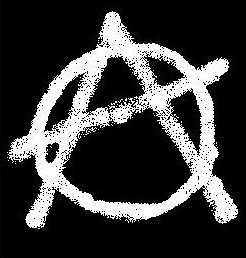13 July 2017
Eruption in Hamburg
Political violence in Europe.
By Neil Tidmarsh
 Europe breathed a big sigh of relief after extremist political parties failed to make much ground in recent elections in Holland, Austria and France. But there are plenty of signs that political extremism hasn’t gone away and may even be thriving under the surface, ready to emerge in a more dangerous and disturbing form.
Europe breathed a big sigh of relief after extremist political parties failed to make much ground in recent elections in Holland, Austria and France. But there are plenty of signs that political extremism hasn’t gone away and may even be thriving under the surface, ready to emerge in a more dangerous and disturbing form.
The violence in Hamburg last week gave the world a clear glimpse of these alarming undercurrents. Most of the 100,000 protesters who gathered from all over Europe were no doubt planning to demonstrate peacefully, but an estimated 8000 of them were extremists with more aggressive intentions. More than 400 people were arrested and almost 500 police officers were injured as the security forces clashed with the “black block” of rioters dressed in black and wearing hoods, masks or scarves to hide their faces (illegal in Germany during a protest). Shops were looted, cash machines smashed, windows broken, cars set on fire and burning barricades built. The police used water-cannon and tear-gas on the militants, who fought back by hurling bottles and smoke bombs and by firing steel balls from sling-shots. At one stage police armed with assault rifles were sent into the Schanzenviertel district to clear buildings of protestors preparing to throw firebombs and paving stones at them. As the G20 world leaders returned home and the clouds of smoke hanging over Hamburg began to disperse, some members of Germany’s governing coalition called for the creation of a database of anarchists and left-wing extremists, to be used by security forces across Europe to stop similar attacks on law and order in the future.
The scenes in Hamburg, however, were just the latest signs of violent and otherwise clandestine activism so far this year. There have been others in recent months, even though they have received relatively little coverage, eclipsed in the media perhaps by Islamist terror attacks.
Last March, for instance, a letter bomb exploded in the Paris offices of the International Monetary Fund. It was intended for the IMF’s Europe director Jeffrey Franks, but it was opened by a secretary who suffered burns to her hands and face and damage to her eardrum. A similar letter bomb was sent to the office of the German finance minister Wolfgang Schauble in Berlin, but fortunately it was intercepted in the mailroom by police. Both letters had been sent from Athens. Greek anti-terror police blamed the militant left-wing anarchist group ‘Conspiracy of the Cells of Fire’, and indeed the group claimed responsibility in an on-line statement. Police found eight more parcel bombs intended for EU officials, institutions and multinational companies in a postal sorting centre in Kryoneri, north of Athens; one of them exploded, injuring a post office employee.
Two months ago, two bombs exploded outside a post office in a residential area in central Rome. No one was hurt and no one claimed responsibility, but police suspect anarchist groups and believe that it was a “demonstrative act”, i.e. a warning of intent and capability. A similar explosive device was found outside a post office in Turin last November.
In Athens last month, a parcel bomb seriously injured the former prime minister and retired banker Lucas Papademos. He was opening his post in his car while he was being driven home. He suffered injuries to his leg, abdomen and eyesight. His driver and a passenger were also injured. A few days before, an envelope containing bullets was intercepted at a post office in Athens; it had been addressed to Greece’s general secretary for public revenue.
There have been recent cases of violent activism by extreme right-wing militants as well. In Germany two months ago, two army officers and a student were arrested, suspected of planning extreme right-wing terrorist attacks; defence minister Ursula von der Leyen subsequently announced a new programme of ‘political education’ for troops and the removal of any remaining symbolic links between today’s army and Hitler’s Wehrmacht. In France earlier this month, police in Argenteuil arrested a right-wing extremist (with convictions for condoning terrorism) and charged him with plotting to kill President Macron this week on Bastille Day.
Reading reviews of a recently published book about Patty Hearst and the Symbionese Liberation Army (American Heiress by Jeffrey Toobin) is a reminder of just how common and widespread extreme political violence was in the democratic West only a generation ago, and just how distant and insanely unreal it now seems. In the 1970’s, mysterious terrorist outrages seemed to be part of everyday life. The Red Army Faction; the IRA; the Baader-Meinhof Gang; ETA; the bomb attack on Bologna railway station by the neo-fascist Nuclei Armati Rivoluzionari which killed 85 people and wounded another 200; the kidnapping and murder of the Italian politician Aldo Moro by the Red Brigades. But such events now seem part of history, almost to have taken place in another world. Jean-Jacques Susini, who planned and led OAS terrorist attacks in the 1960s, died last week. These days, Northern Ireland’s republicans are engaged in the constitutional problems and challenges of democratic power-sharing. Three months ago, ETA handed over the last of its weapons to the authorities in France and Spain.
But the events in Hamburg have proved that there is no room for complacency. Political violence still exists in the democratic West, even if its undercurrents aren’t always visible and even though its outbreaks are currently overshadowed by the global phenomenon of militant Islamism.
If you enjoyed this article please share it using the buttons above.
Please click here if you would like a weekly email on publication of the ShawSheet

